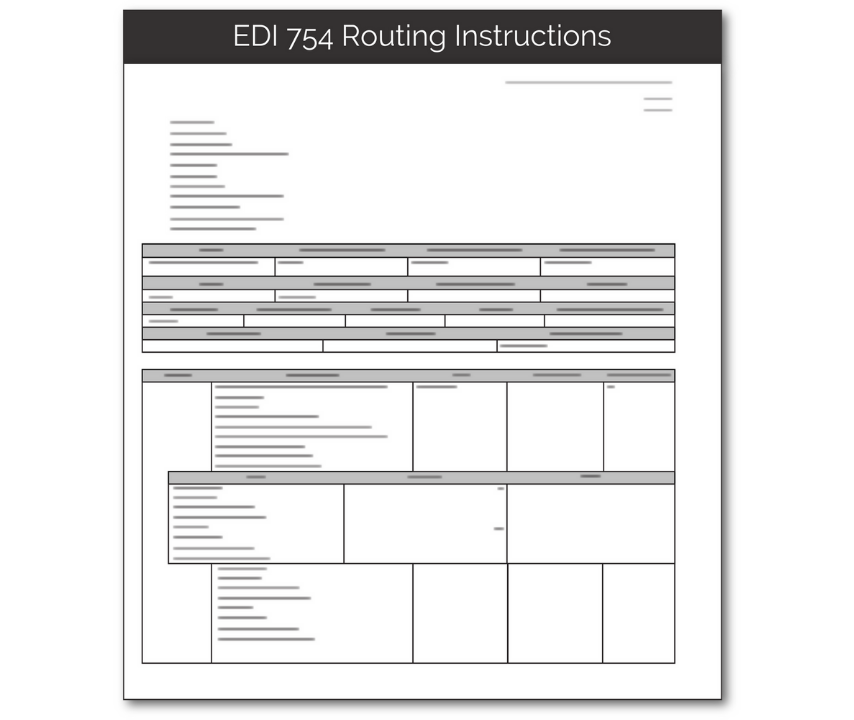EDI 754
Routing Instructions

What is an EDI 754?
EDI 754, also known as a Routing Instructions EDI transaction, is an example of an electronic data interchange (EDI) document used during the fulfillment process. Generally, EDI 754 Routing Instructions are sent from a buyer to a supplier, authorizing a shipment of goods, and detailing instructions for that shipment.
EDI 754 documents follow the x12 format set by the American National Standards Institute (ANSI), a not-for-profit organization that regulates EDI formats in the U.S.
What are the Essential Components of EDI 754?
EDI 754 transactions are used to both authorize and outline instructions for a shipment. Therefore, they need generally contain specific shipping details, including:
- Shipment confirmation and authorization
- Carrier details
- Ship from/to locations
- Pick up date and time
- Number of trailers allocated for the shipment

How do I Use EDI 754?
While many suppliers manage shipment transport and carrier communication, some retailers prefer to manage incoming shipments themselves. By doing so, these retailers are able to better control their incoming inventory and can often reduce their transportation costs. A few of the major retailers who use EDI 753 and EDI 754 include Amazon, Kohl’s, and Dick’s Sporting Goods, and JC Penny’s.
In these trade relationships, a supplier will generally send an EDI 753 Request for Routing Instructions when a shipment is ready to be picked up and before the preferred shipping date on the EDI 850 Purchase Order. The retailer responds with the EDI 754 Routing Instructions document, which confirms the details on EDI 753, indicates any changes to the pickup date and time, and specifies the chosen carrier who will be making the delivery.
After receiving the EDI 754 document, the supplier will return with an EDI 997 Functional Acknowledgement to confirm receipt. They now also have the information they need to create and send an EDI 856 ASN.
What are the Benefits of EDI 754?
The main benefit of using EDI 754 for retailers is an increase in inventory and shipment control, which enables them to easily manage replenishment, and create cost-effective relationships with carriers. It’s also great for suppliers, who no longer need to worry about carrier rate negotiations and communications for those trading partners.
EDI 754 can be fully automated to send in response to an EDI 753 document. This not only streamlines communication with the supplier for faster shipments, but also eliminates the need for retailer workers to check for and manually respond to EDI 753 transactions. Integrated EDI also ensures data and shipment accuracy by pulling details from other internal systems and order documentation and creates a virtual paper trail that is easy to track throughout the order process.

